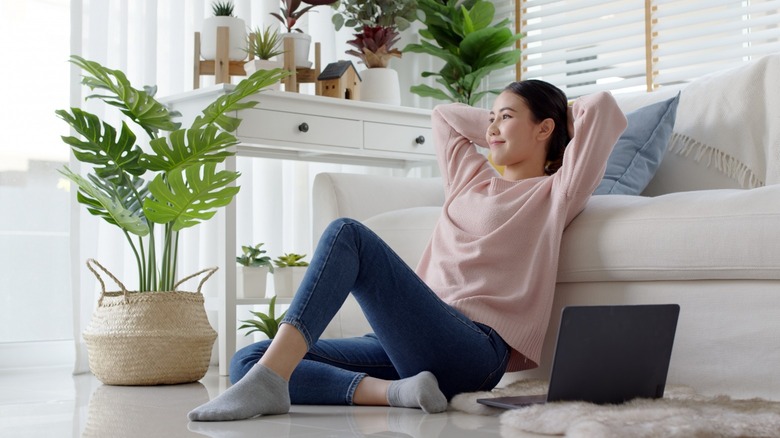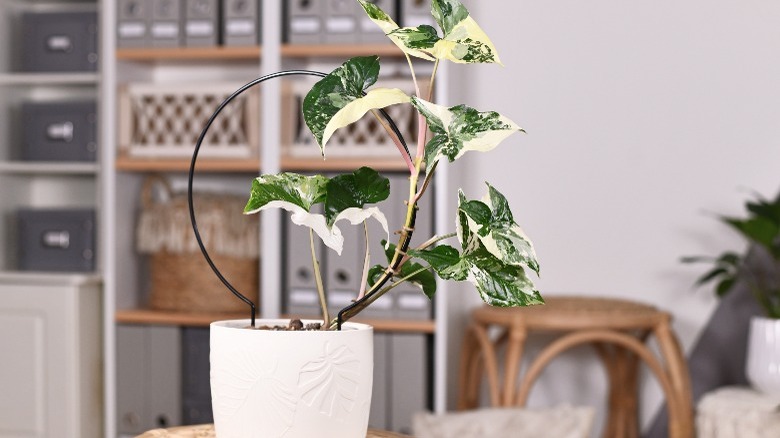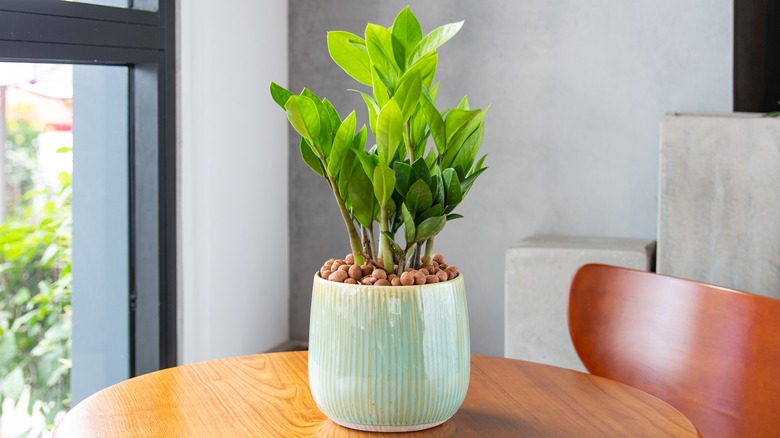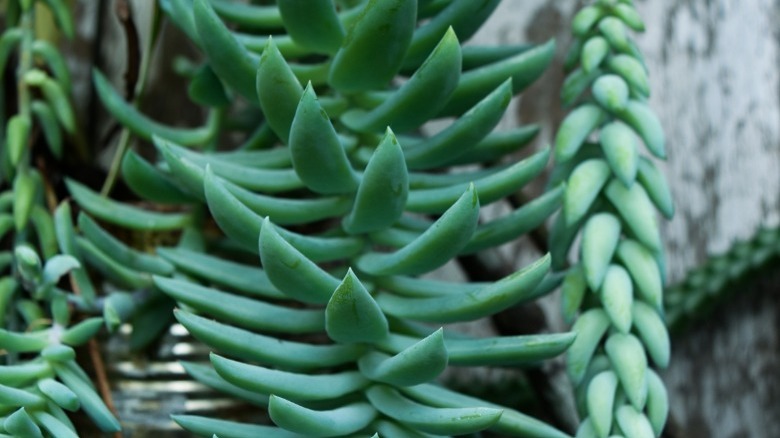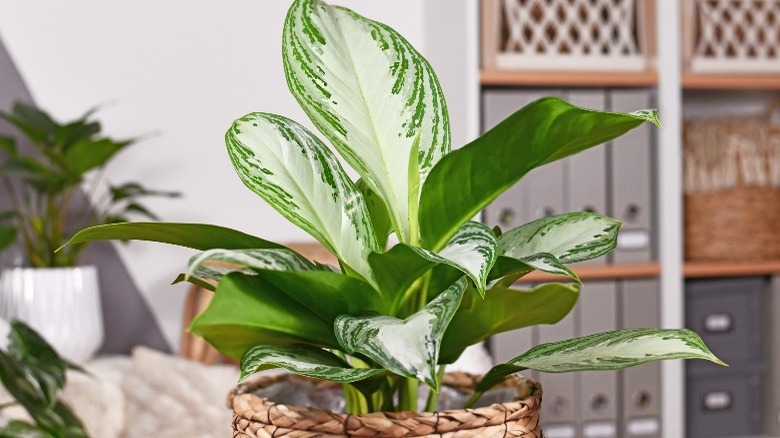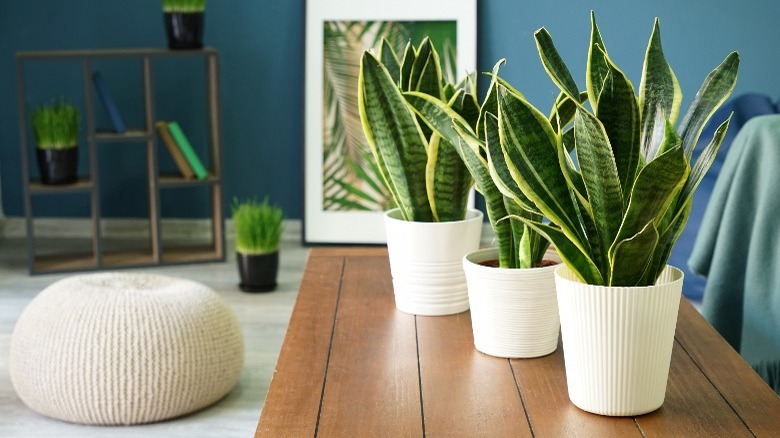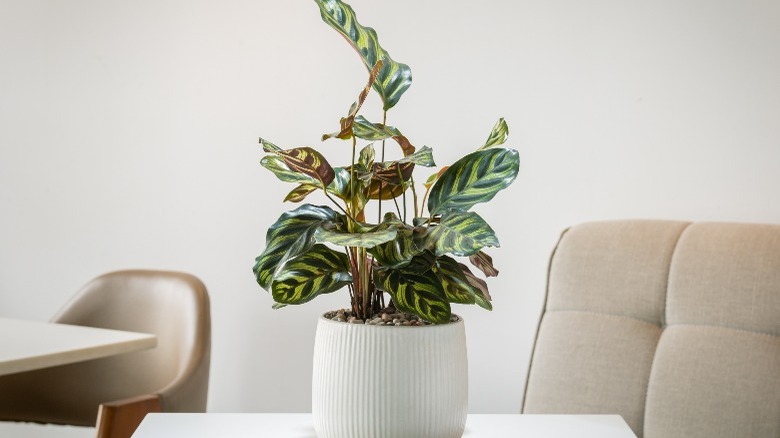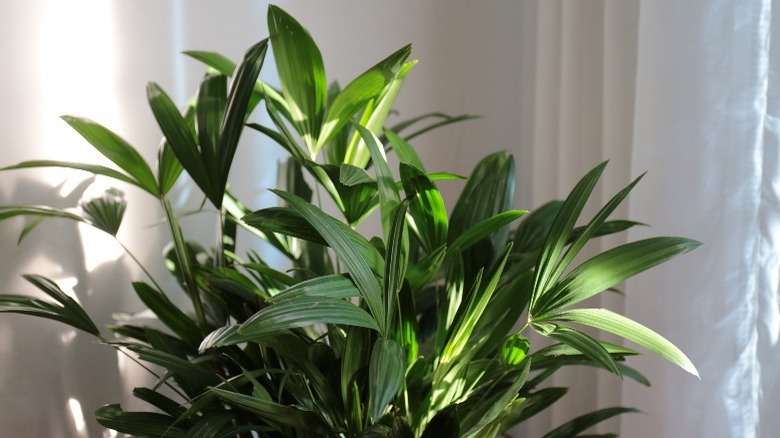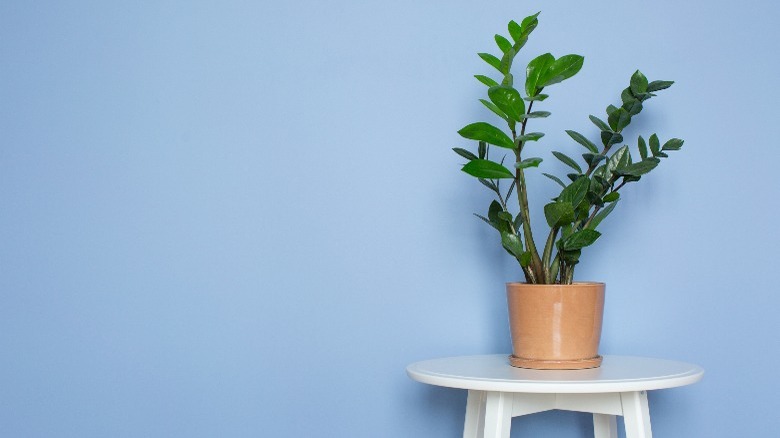Plants That Will Thrive When You Live In An Apartment
Even if you live in a tiny apartment with very little light, there are many options for making your space plant-friendly. After all, plants are lush, beautiful, and add a special touch of nature to any living space. According to Healthline, there are multiple health benefits supported by scientific evidence of having indoor plants. Caring for plants is therapeutic, can reduce stress, and help improve your focus. Some plants have even been known to increase productivity.
If you live in an apartment, you might think you can't grow plants. But even if you work full-time and your apartment doesn't get much sunlight, you have options. In fact, even if you tend to be a bit forgetful, there are plants practically anyone can grow. But where do you start, and how do you know what to buy? Well, of course, that's where we come in, to give you a helping hand! So let's talk about some of the specific plants that will thrive when you live in an apartment to get you started.
The Arrowhead plant
The Arrowhead plant, also called the Arrowhead Vine, American Evergreen, or Goosefoot, grows in low-light conditions, making it great for apartment rooms that face a brick wall or get little light (via Planta). They can also grow into a vining plant, allowing you to save floor space by growing them in hanging baskets or planters. Giving them something to climb on enables you to incorporate the trailing vines into your decor. However, you can also prune them to stay in a thick, bushy shape if you prefer.
These easy-to-care-for plants love humidity, so they're also great for bathrooms or kitchens. As long as they get stippled or indirect light, these plants can thrive in an apartment quite easily. In fact, they can literally be put almost anywhere! Plus, they come in varying colors and patterns, including purple, silver, pink, and milky white, allowing you to better match your design colors and individual style.
ZZ plant
Zamioculcas zamiifolia, nicknamed the ZZ plant, is well-known for its resilience (via Apartment Buds). It will thrive in an apartment with low light conditions and doesn't even require much water. In fact, the ZZ plant is known as one of the most drought-tolerant plant species and should be allowed to dry out in-between waterings. Whether your apartment is equipped with bright or little indirect light, the ZZ plant will adapt and thrive.
Additionally, these plants are slow growers, so if you're trying to save on space, buy a ZZ plant just slightly smaller than the spot you want to put it in. You'll only have to re-pot it about once every two years. It's also very low-maintenance, so if you're caught up in a bust schedule and sometimes forget about it, it will be fine. This plant is perfect for those of you who are new to indoor gardening, especially if you're trying to work within a confined space.
String of Bananas plant
According to Joy Us Garden, the String of Bananas plant is perfect for smaller spaces like apartments because of their space-saving abilities. They grow as trailing vines that can reach up to 6 feet in length. They don't require a footprint as they do well hung from containers anywhere. They also thrive in small space-saving pots and you can put them on a shelf, as well, and let the vines trail either down or upwards, with a little guidance. The foliage adds a fun, decorative element as it resembles miniature bananas strung together — hence the name.
However, the String of Bananas does need as much indirect light as possible, so it will do best near a bright window or grow light. It's a good idea to rotate the plant every few months to make sure it's getting light evenly on all sides. As for watering, a good, thorough sprinkling every two to three weeks is ideal, and then let it dry out between waterings.
Chinese Evergreen plant
Also known as the Aglaonema, the Chinese Evergreen plant will thrive in low-light conditions like basement apartments (via Plant Care Today). Plus if you're in a limited space, lower light will mean slower growth. It's a cinch to care for if you're new to apartment gardening, and this is a plant that can even thrive in a bathroom with no windows! It can reach between one and three feet both tall and wide but is a slower-growing plant.
Another terrific thing about these plants is they can tolerate dry air from HVAC systems or drafty, older apartment buildings. They're also drought-tolerant and should dry out in-between watering. If you do have dry air in your apartment, you might need to add a humidifier if the leaves start to yellow. The Chinese Evergreen is in the same family as Peace Lilies and will bloom in a similar fashion. It's a hardy plant that thrives in all types of adverse growing conditions.
Snake plant
According to PPM Apartments, Snake plants are extremely hard to kill, even for those without a green thumb. This along with their tolerance to low-light conditions makes them an ideal plant for apartments. These tough plants can withstand almost anything and rarely need water. Be sure to allow your Snake plant to dry out completely between waterings, and try not to get the foliage wet. Additionally, this is a perfect plant for smaller spaces, as it's typically a compact plant.
Its official name is Sansevieria trifasciata, also called Mother-in-Law's tongue. It makes a perfect addition to the bedroom or really any room of your apartment. Snake plants can tolerate dry air and apartments with drafts. They hardly ever need repotting and very rarely develop pest problems. There's even some evidence suggesting they can help with depression and mental health issues. These plants will brighten up any dark apartment!
Calathea plant
The Calathea, officially the Marantaceae plant, is bright, beautiful, and can thrive in apartments due to its ability to tolerate low light conditions (via Ambius). Though they need plenty of light, it can all be indirect. This is due to its broad leaves, a common characteristic of low-light tolerant plants. They use their wider surface areas to absorb all available light and store it. As for water, keep the soil moist, but not wet, and try not to let it dry out too much. Use purified or filtered water to water this plant, and be sure the pot it's in has proper drainage. Be careful, as too much water can drown the Calathea plant.
There are multiple varieties, which are typically known by more common names, such as cathedral plants, peacock plants, zebra plants, rattlesnake plants, and prayer plants. Most varieties will flower all year, except winter, as long as you give it a little regular fertilizer each season. They also don't need pruning to thrive and only get to about two feet tall, perfect for cozy apartment spaces.
Broadleaf Lady Palm
According to Smart Garden & Home, the Broadleaf Lady Palm is the perfect small potted tree for an apartment, due to multiple factors. For example, it thrives best in full or partial shade, making it an excellent plant for low-light apartments. Even if you live in a basement apartment, as long as you have at least one window, place the Lady Palm in the same room and it will quickly adapt. It prefers moist but not wet soil, much the same as the Calathea. However, Lady Palm is more drought tolerant, so if you forget to water it here and there, it should be ok.
It also doesn't mind the dry air that can sometimes permeate older indoor apartment buildings. Additionally, the Lady Palm, officially called Rhapis Excelsa, is a smaller indoor potted tree that grows rather slowly and is perfect in the corner, where it won't take up much space. It will add a tropical feel to your apartment and is quite easy to care for.
The Cast Iron plant
Possibly the best plant out there for a dark basement apartment is the Cast Iron plant (via Danger Garden). This plant is unique, in the fact that it can grow with practically no light at all. Its true name is Aspidistra elatior, and it can be put in the darkest corners, given very little water, and still thrive. Of course, that's how it got its name because it is practically indestructible.
It is a simple plant that requires very little care, and it's also a slow-growing plant. Therefore, you can count on the plant staying close to the same size for a while, before having to worry about replanting it or finding a different spot for it. Another great thing about this plant is that it's completely non-toxic, according to the Houseplant Resource Center. The Cast Iron plant is perfect for the beginner in apartment gardening, too. So if you're looking for plants that will thrive when you live in an apartment, try one of the ones on this list!
